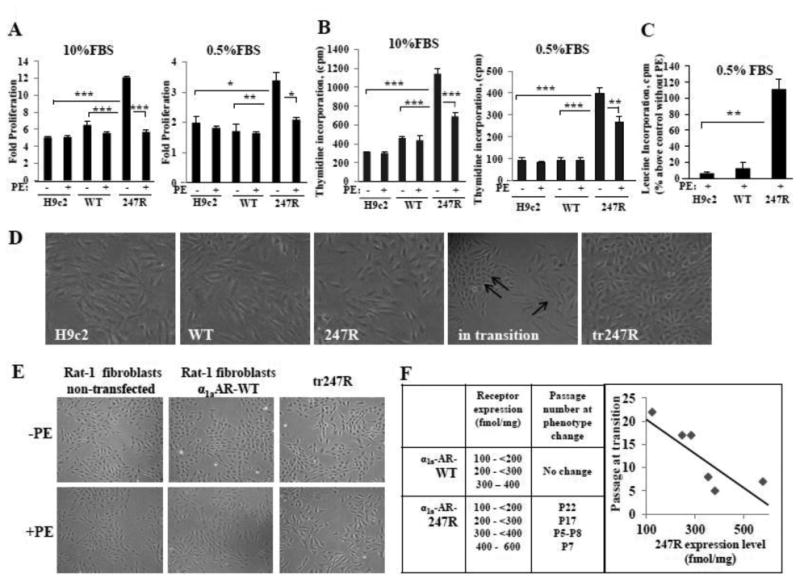Figure 1.

Expression of 247R triggers increased proliferation of cardiomyoblasts and their transition into fibroblast-like cells. (A,B) 247R triggers increased cell proliferation compared with control H9c2 cells or cells expressing WT; agonist (PE) treatment inhibits cell proliferation. Cell counts (A) are displayed as fold-proliferation, counts per minute (CPM) of incorporated [3H]-thymidine (B) are normalized to DNA per 1,000 cells. (C) Agonist stimulation induces pronounced hypertrophy in 247R cells as determined by leucine incorporation. Cells were cultured in the presence or absence of 10μM PE for 24h, followed by labeling with 1μCi [3H]-leucine for additional 24h. In (A,B,C) representative data from one of three independent experiments with mean values ± SE are shown. (D) 247R induces morphological and phenotypic changes. Morphology of control and WT cells or 247R cells before, during and after transition (tr247R). Double arrow indicates cell clusters with altered morphology compared with cardiomyoblast morphology (single arrow). (E) Tr247R cells exhibit morphological similarities to fibroblasts. Images of cells cultured for 24h in the presence or absence of PE taken at 20X magnification. (F) Morphology and phenotype changes of H9c2 cardiomyoblast induced by 247R correlate with receptor expression level.
